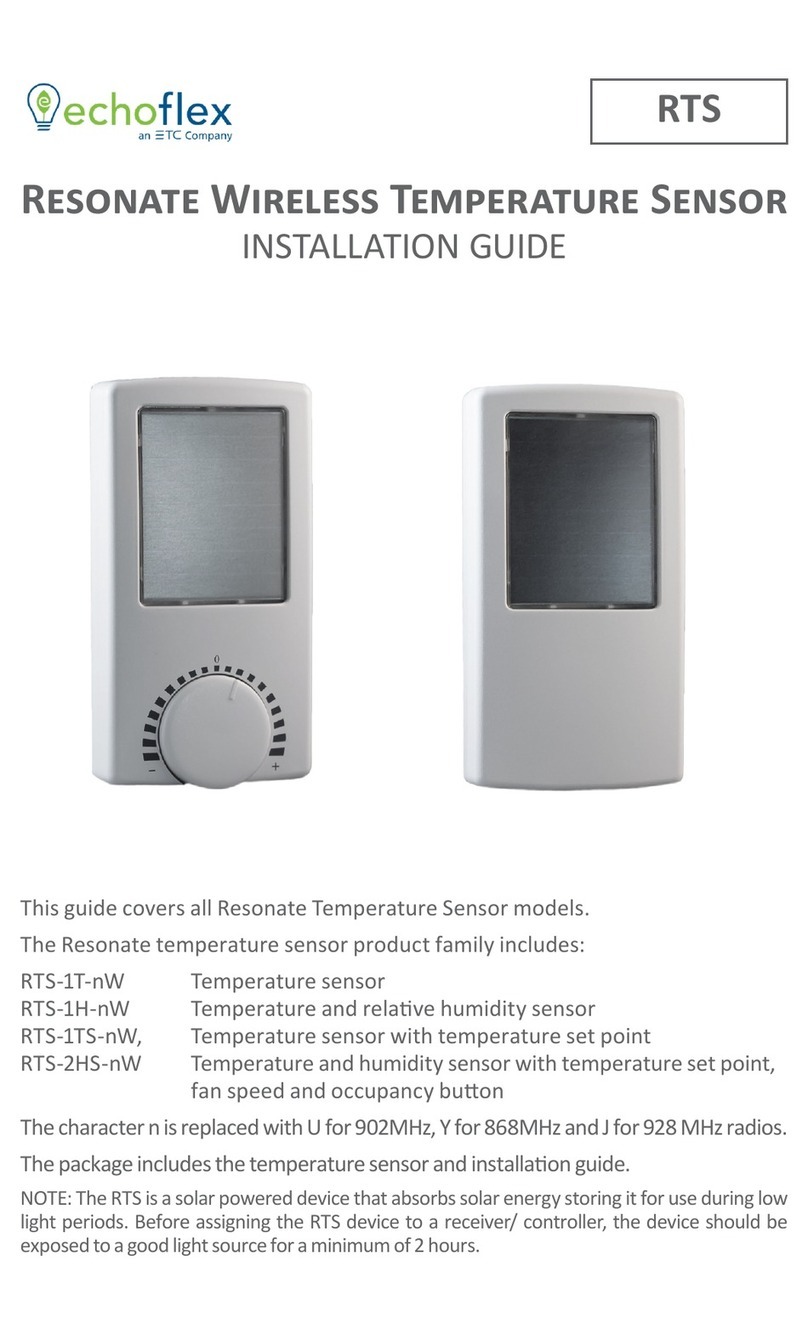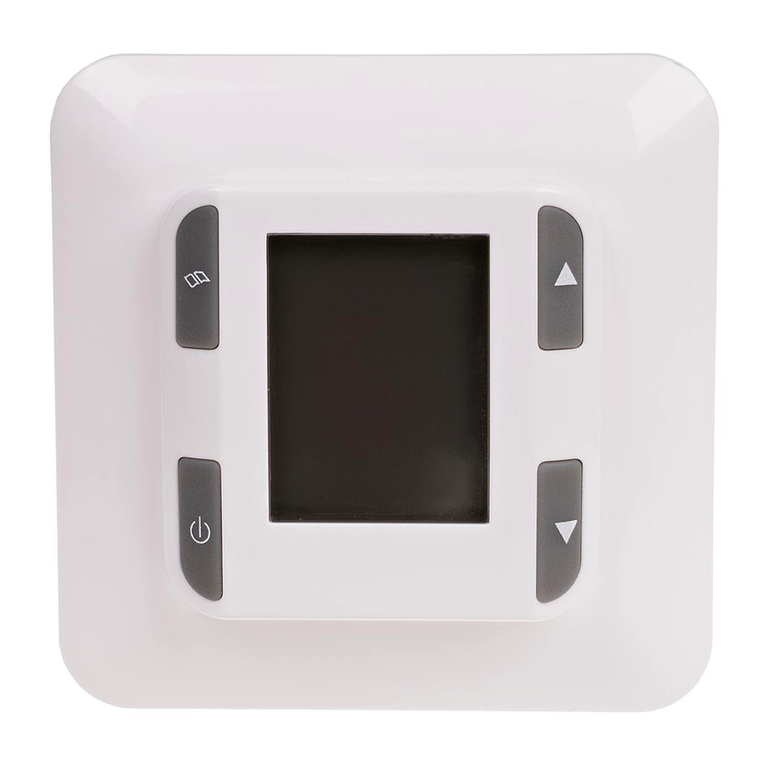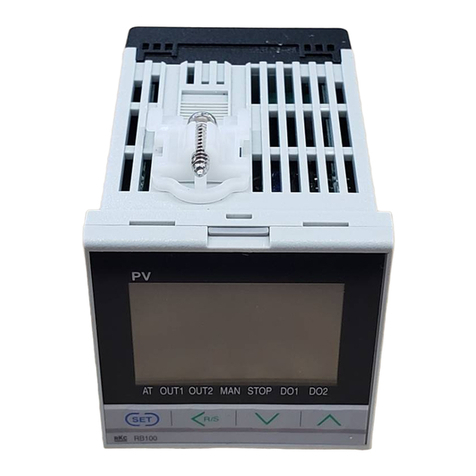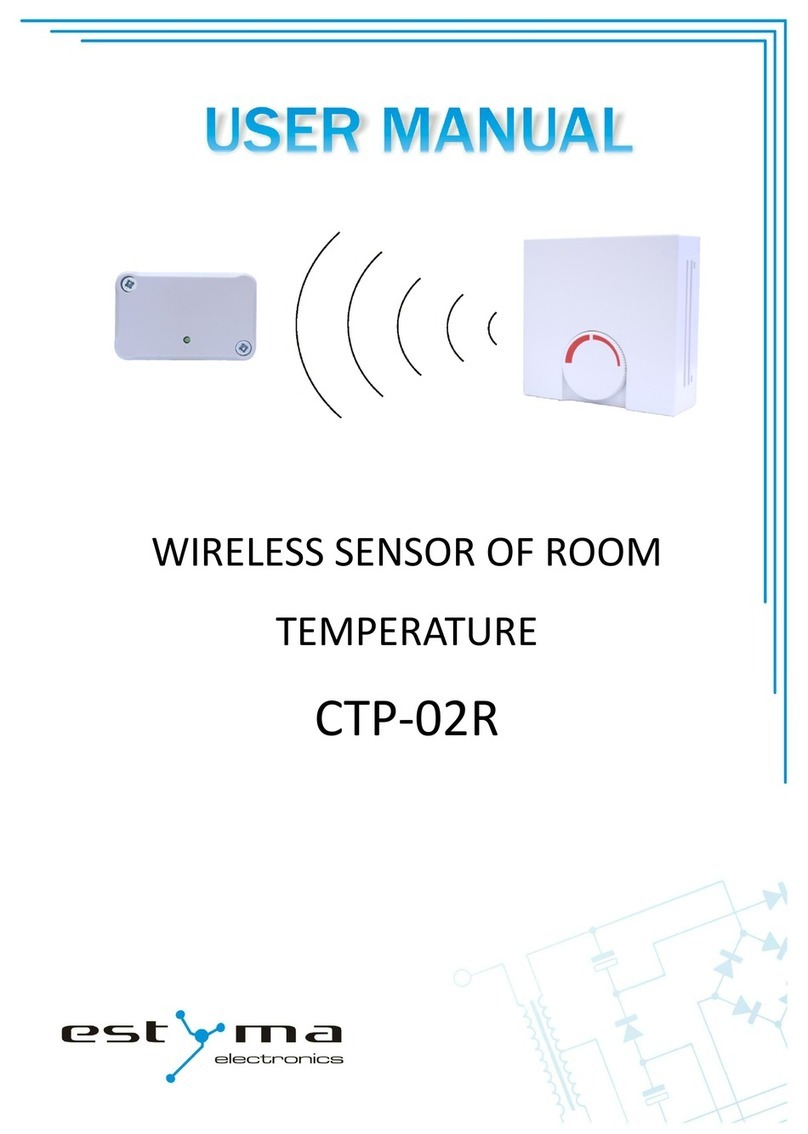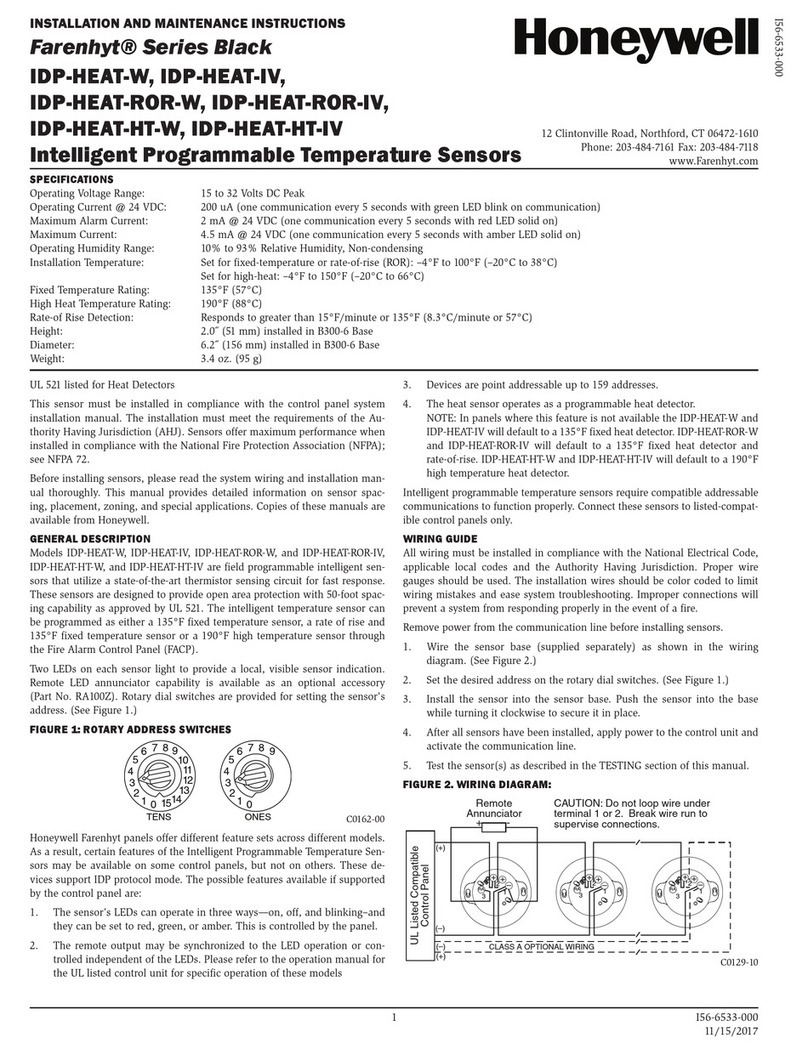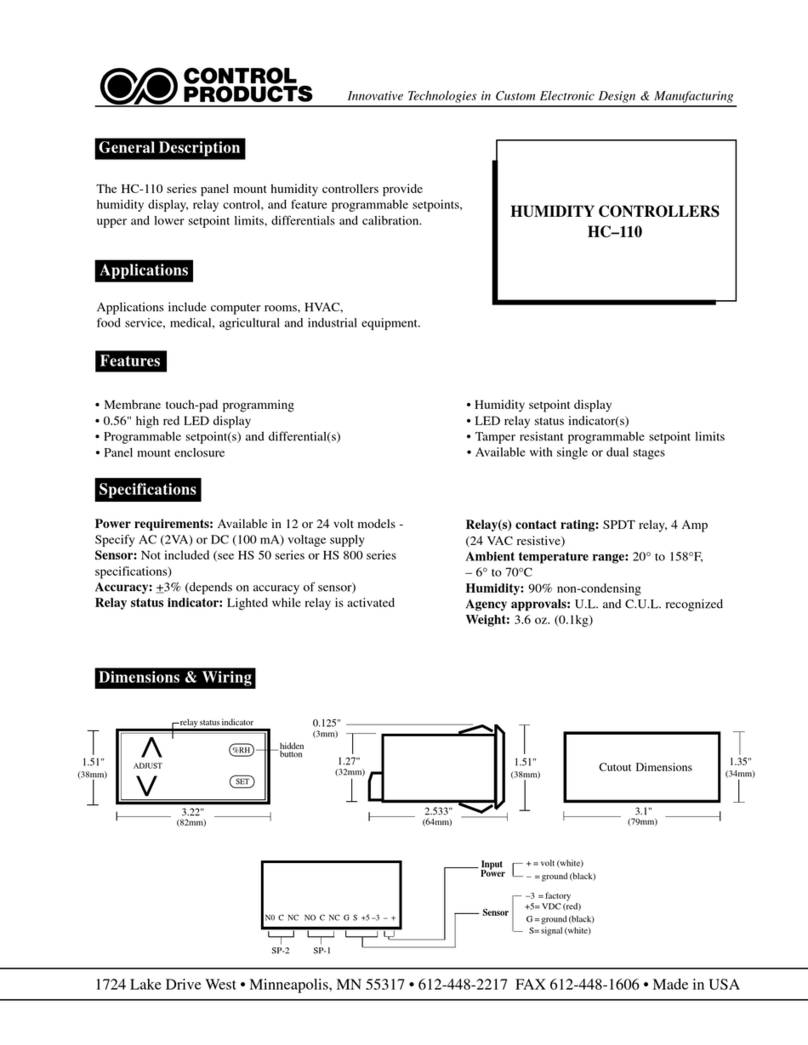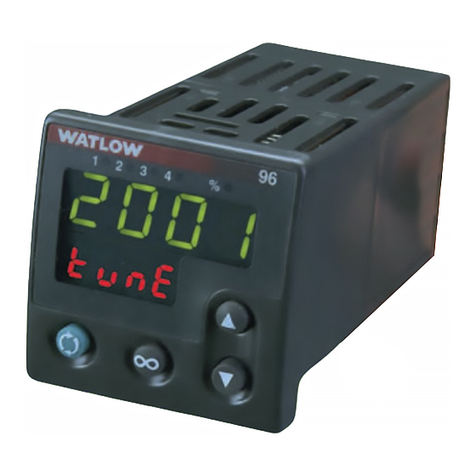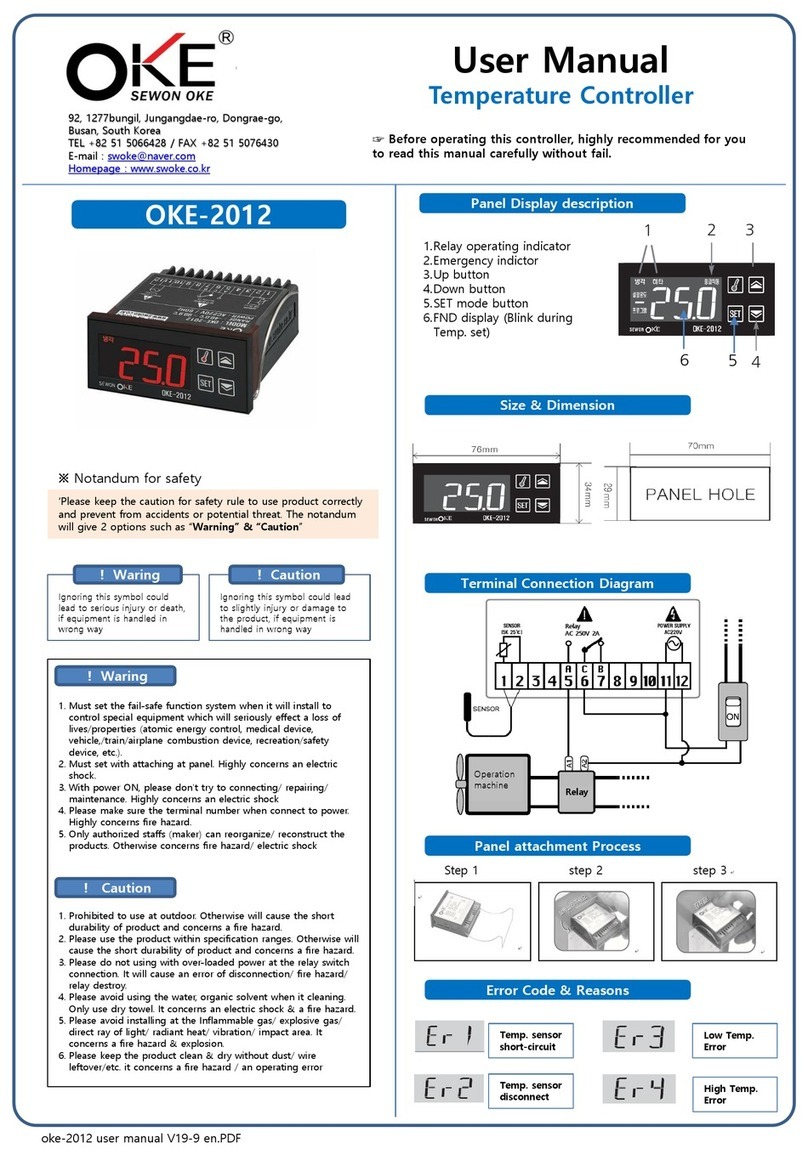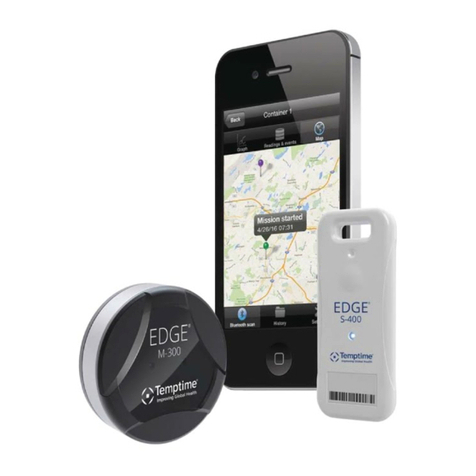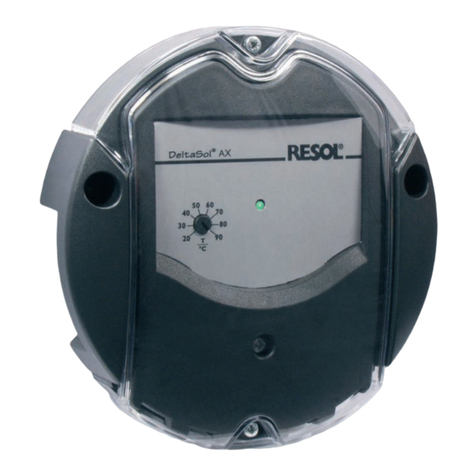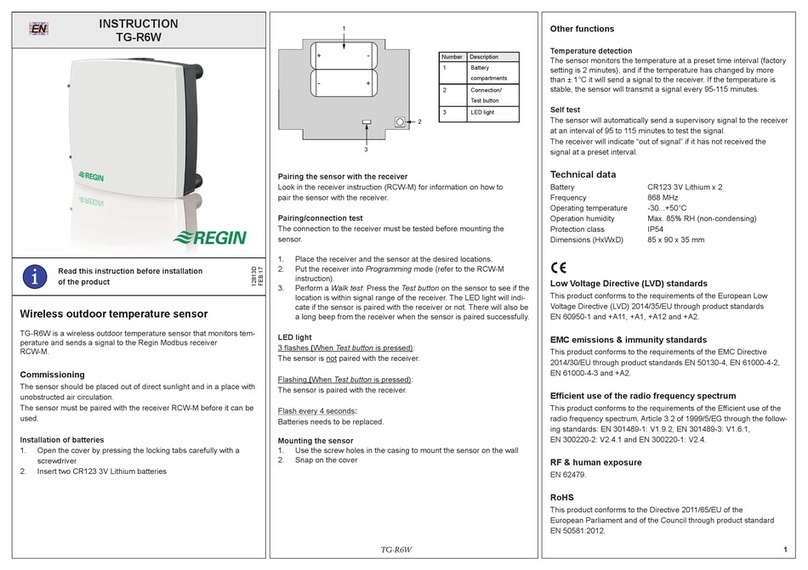Thermo Solar SR14 User manual

Read carefully before installation, commissioning and operation
Temperature Difference Controller
SR 14
Installation and operating instructions
applies to SR14 versions V1, V2, V3, V4
SR 14

Content
A.1. - EC declaration of conformity 4
A.2. - General instructions 4
A.3. - Explanation of symbols 4
A.4. - Changes to the unit 5
A.5. - Warranty and liability 5
B.1. - Specifications 6
B.2. - Temperature resistance table
for Pt1000 sensors 6
B.3. - About the controller 7
B.4. - Versions 7
B.5. - Scope of supply 8
B.6. - Disposal and pollutants 8
B.7. - Hydraulic variants 9
C.1 Wall installation 10
C.2 Electrical connection 11
C.3 Installing the temperature sensors 13
D Terminal connection diagrams 14
E.1 Display and Input 19
E.2 Parametrisation 20
E.3 Free commissioning 20
E.4 Menu sequence and menu structure 21
1. - Measurement values 22
2. - Statistics 23
2.1. - Operating hours 23
2.2. - Average temperature difference T 23
2.3. - Heat output 23
2.4. - Graphic overview 23
2.5. - Message log 23
2.6. - Reset / clear 23
3. - Display mode 24
3.1. - Schematic 24
3.2. - Overview 24
3.3. - Alternating 24
3.4. - Eco Mode 24
4. - Operating modes 25
4.1. - Automatic 25
4.2. - Manual 25
4.3. - Off 25
5. - Settings 26
6. - Protective functions 29
6.1. - Seizing protection 29
6.2. - Frost protection 29
6.3. - System protection 30
6.4. - Collector protection 30
6.5. - Col.- Alarm 30
6.6. - Recooling 31
6.7. - Anti-Legionella 32
7. - Special functions 33
7.1. - Program selections 33
7.2. - Signal V1 33
7.2.1. - Type of signal 34
7.2.2. - Profile 34
7.2.3. - Output Signal 34
7.2.4. - PWM off 35
7.2.5. - PWM on 35
7.2.6. - PWM Max 35
7.2.4 - 0-10V off 35
7.2.5 - 0-10V on 35
7.2.6 - 0-10V Max 35
7.2.7. - Speed when „On“ 36
7.2.8. - Show signal 36
7.3. - Speed control 38
7.3.1. - Speed control mode 38
7.3.2. - Purging time 39
7.3.3. - Sweep time 39
7.3.4. - max. speed 39
7.3.5. - min. speed 39
7.3.6. - Setpoint 39
7.4. - Time and Date 40
7.5. - Sensor calibration 40
7.6. - Commissioning 40
7.7. - Factory settings 40
7.8. - Heat quantity 41
7.8.1. - Heat metering 41
7.8.2. - AF type 41
7.8.3. - Glycol portion 41
7.8.4. - Flow rate 41
7.8.5. - T Offset 41
7.9. - Starting aid 42
7.10. - Daylight saving time 42
8. - Menu lock 43
9. - Service values 44
10. - Language 44
Z.1 Malfunctions with error messages 45
Z.2 Replacing the fuse 46
Z.3. Maintenance 47

3
This manual applies to the following hardware versions:
SR14 Version 1
3 temperature sensor inputs
1 relay output 230AC (on/off)
SR14 Version 2
3 temperature sensor inputs
1 electronic relay output 230AC (for speed control of standard pumps)
SR14 Version 3
3 temperature sensor inputs
1 relay output 230AC (on/off)
1 PWM/0-10V output (for speed control of high efficiency pumps)
SR14 Version 4
3 temperature sensor inputs
1 electronic relay output 230AC (for speed control of standard pumps)
1 PWM/0-10V output (for speed control of high efficiency pumps)
When you are unsure which version you have, check the type label on the side
of the controller.
If the version is not readable here, open the controller’s “Service values” menu.
The version is shown in the first line of the service values.

4
Safety instructions
Caution
Information which is especially important for the function and
optimal use of the unit and the system.
A.1. - EC declaration of conformity
By affixing the CE mark to the unit the manufacturer declares that the SR14 conforms to the
following relevant safety regulations:
- EC low voltage directive 2006/95/EC
- EC electromagnetic compatibility directive 2004/108/EC
Conformity has been verified and the corresponding documentation and the EC declaration
of conformity are kept on file by the manufacturer.
Danger
A.2. - General instructions
These installation and operating instructions contain basic instructions and important
information regarding safety, installation, commissioning, maintenance and the optimal
use of the unit. Therefore these instructions must be read completely and understood
by the installation technician/specialist and by the system user before installation, com-
missioning and operation of the unit.
The valid accident prevention regulations, the regulations of the local power utility, the
applicable standards and the installation and operating instructions of the additional
system components must also be observed. The controller does not under any circum-
stances replace any safety devices to be provided by the customer!
Installation, electrical connection, commissioning and maintenance of the unit may
only be carried out by specialists with the appropriate qualification.
For the user: Make sure that the specialist gives you detailed information on the func-
tion and operation of the controller. Always keep these instructions in the vicinity of the
controller.
A.3. - Explanation of symbols
Failure to observe these instructions can result in danger to life
from electric voltage.
Danger
Failure to observe these instructions can result in serious damage
to health such as scalding, or even life-threatening injuries.
Caution
Failure to observe these instructions can result in destruction of
the unit or the system, or damage to the environment.
It is essential that you read this!

5
A.4. - Changes to the unit
A.5. - Warranty and liability
The controller has been manufactured and tested with regard to high quality and
safety requirements. The unit is subject to the statutory guarantee period of two years
from the date of sale.
The warranty and liability shall not include, however, any injury to persons or material
damage that is attributable to one or more of the following causes:
- Failure to observe these installation and operating instructions
- Improper installation, commissioning, maintenance and operation
- Improperly executed repairs
- Unauthorised structural changes to the unit
- Installation of additional components that have not been tested together with
the unit
- Any damage resulting from continued use of the unit despite an
obvious defect
- Failure to use original spare parts and accessories
- Use of the device for other than its intended purpose
- Operation above or below the limit values listed in the
specifications
- Force majeure
- Changes, additions to or conversion of the unit are not permitted
without the written permission from the manufacturer
- It is likewise not permitted to install additional components that have not
been tested together with the unit
- If it becomes clear that safe operation of the unit is no longer possible,
for example because of damage to the housing, then turn the controller
off immediately
- Any parts of the unit or accessories that are not in perfect condition
must be exchanged immediately
- Use only original spare parts and accessories from the manufacturer
- Markings made on the unit at the factory must not be altered,
removed or made illegible
- Only the settings actually described in these instructions may be made
on the controller
Changes to the unit can compromise the safety and function of the
unit or the entire system.
Safety instructions
Danger

6
Description of controller
B.1. - Specifications
°C 0 102030405060708090100
1000 1039 1077 1116 1155 1194 1232 1270 1308 1347 1385
Mains voltage 230AC +/- 10%
Mains frequency 50 - 60Hz
Power consumption ~ 1.5VA
Internal fuse 2A slow blow 250V
Protection category IP40
Protection class II
Overvoltage Category II
Degree of Pollution Category II
Vers.1 Vers.2 Vers.3 Vers.4
mechanicalrelay460VAforAC1/460WforAC3 1-1-
electronicrelaymin.5W...max.120WforAC3 -1-1
0-10V output, tolerance 10%, 10 k load or
PWM output freq. 1 kHz, level 10 V
--11
PT1000sensorinputmeasuringrange-40°Cto300°C3333
Permissible cable length of sensors and appliances:
sensor S1 (e.g. collector sensor) <30m
sensors S2 and S3 (e.g. storage sensor) <10m
PWM / 0...10V <3m
electronic relay <3m
mechanichal relay <10m
Permissible ambient conditions:
Ambient temperature
- for controller operation 0°C...40°C
- for transport/storage 0°C...60°C
Air humidity
- for controller operation max. 85% rel. humidity at 25°C
- for transport/storage no moisture condensation permitted
Other specifications and dimensions
Housing design 2-part, ABS plastic
Installation methods Wall installation
Overall dimensions 115mm x 86mm x 45mm
Aperture installation
dimensions 108mm x 82mm x 25.2mm
Display Fully graphical display, 128 x 64 dots
Operation 4 entry keys
B.2. - Temperature resistance table for Pt1000 sensors

7
Description of controller
B.3. - About the controller
The Temperature Difference Controller SR14 facilitates efficient use and function con-
trol of your solar or heating system. The device is impressive most of all for its func-
tionality and simple, self-explanatory operation. For each step in the input process the
individual entry keys are assigned to appropriate functions and explained. The control-
ler menu contains headwords for the measured values and settings, as well as help
texts or clearly-structured graphics.
The SR14 can be used as a temperature difference controller for the various system
variants illustrated and explained under B.5.
Important characteristics of the SR14:
- Depiction of graphics and texts in a lighted display
- Simple viewing of the current measurement values
- Analysis and monitoring of the system by means of statistical graphics,etc.
- Extensive setting menus with explanations
- Menu block can be activated to prevent unintentional changes of settings
- Resetting to factory settings
This manual applies to the following different hardware versions:
SR14 Version 1
3 temperature sensor inputs
1 relay output 230AC (on/off)
SR14 Version 2
3 temperature sensor inputs
1 electronic relay output 230AC (for speed control of standard pumps)
SR14 Version 3
3 temperature sensor inputs
1 relay output 230AC (on/off)
1 PWM/0-10V output (for speed control of high efficiency pumps)
SR14 Version 4
3 temperature sensor inputs
1 electronic relay output 230AC (for speed control of standard pumps)
1 PWM/0-10V output (for speed control of high efficiency pumps)
If the version is not readable here, open the controller’s “Service values” menu.
The version is shown in the first line of the service values.
When you are unsure which
version you have, check the
type label on the side of the
controller.
B.4. - Versions

8
B.5. - Scope of supply
- Temperature Difference Controller SR14
- 2 Screws 3,5x35mm, 2 plugs S6 for wall installation
- 4 strain relief clips with 8 screws, replacement fuse 2A slow blow
- 1 connection clamp for PE terminal block.
- Installation and operating instructions SR14
Optionally contained depending on design/order:
- 2-3 Pt1000 temperature sensors and immersion sleeves
Additionally available:
- Pt1000 temperature sensors, immersion sleeves, overvoltage protection
B.6. - Disposal and pollutants
The unit conforms to the European RoHS directive 2002/95/EC for the restriction of
the use of certain hazardous substances in electrical and electronic equipment.
Caution
The unit must not under any circumstances be disposed of with ordinary
household refuse. Dispose of the unit only at appropriate collection
points or ship it back to the seller or manufacturer.
Description of controller

9
B.7. - Hydraulic variants
Description of controller
Caution
The following illustrations should be viewed only as schematic dia-
grams showing the respective hydraulic systems, and do not claim to
be complete. The controller does not replace safety devices under any
circumstances. Depending on the specific application, additional system
components and safety components may be mandatory, such as check
valves, non-return valves, safety temperature limiters, scalding protec-
tors, etc., and must therefore be provided.
1 2
3 4
5 6
7
Solar with
storage tank
Solar with Pool
Solid fuel boiler with storage
Raising of heat circuit Thermostat
T Universal 8Stop valve
Storage transfer
9Solar with heat
exchanger
and pool

10
C.1.1
Caution
C.1.2
C.1 Wall installation
Install the controller only in dry areas and under the ambient conditions de-
scribed under 2.1 “Specifications”. Carry out the following steps:
1.Unscrew cover screw completely
2.Carefully pull upper part of housing from
lower part.
3.Set upper part of housing aside, being
sure not to touch the electronics when
doing so.
4. Hold the lower part of the housing
(C.1.2) up to the selected position and
mark the 2 mounting holes. Make sure
that the wall surface is as even as pos-
sible so that the housing does not become
distorted when it is screwed on.
5. Using a drill and size 6 bit, drill 2 holes
at the points marked on the wall and push
in the plugs. Also possible is the installa-
tion with 4 drill holes.
6. Insert the upper screw and screw it in
slightly.
7. Fit the upper part of the housing and
insert the other screws.
8. Align the housing and tighten the
screws.
Installation

11
Caution
Danger
Caution
Caution
C.2 Electrical connection
Before working on the unit, switch off the power supply and secure
it against being switched on again! Check for the absence of power!
Electrical connections may only be made by a specialist and in
compliance with the applicable regulations.
Do not use the controller if the housing shows visible damage.
Low-voltage cables such as temperature sensor cables must be routed
separately from mains voltage cables. Feed temperature sensor cables
only into the left-hand side of the unit, and mains voltage cables only
into the right-hand side.
The customer must provide an all-pole disconnecting device, e.g. a
heating emergency switch.
The cables being connected to the unit must not be stripped by more
than 55mm, and the cable jacket must reach into the housing just to the
other side of the strain relief.
We recommend the use of flexible cables to ease the installation in the
clamp room.
Caution
1.Select necessary program/hydraulics
(see section D)
2. Strip cables by 55mm max., insert, fit
the strain relief devices, strip the last
9-10 mm of the wires. (Fig. C.2.1)
3.Open controller as described under fig.
C.1.1, insert cables and install strain
reliefs
4.Install PE terminal block (see fig. 2.1.a).
Installation
continued on
next page
C.2.1
C.2.1.a

12
5. Connect the female connector block ‘s
clamp connections as described in the
terminal connection plans. When using
stranded cables, use a small screw driv-
er and push the orange buttons while
inserting (see fig. C.2.1.c). When using
solid cable or end splice, just push the
cables in (see fig. C.2.1.d).
6. Plug Female connectors into onboard
headers.
7. Hinge the upper part of the casing on
the top of the lower part and close the
casing gently.
8. Fasten with screw.
9. Switch on mains voltage and place
controller in operation.
Installation
C.2.1.e
C.2.1.c
C.2.1.d
screw driver

13
Installation
The controller operates with Pt1000 temperature sensors which are accurate to the
degree, thus ensuring optimal control of system functions.
C.3 Installing the temperature sensors
Caution
Position the sensor precisely in the area to be measured!
Only use immersion, pipe-mounted or flat-mounted sensors suitable
for the specific area of application with the appropriate permissible
temperature range.
Caution
The line of S1 can be extended if needed to a maximum of 30m using a
cable with a cross-section of at least 0.75mm². The lines of S2 and S3
can be extended if needed to a maximum of 10m using a cable with a
cross-section of at least 0.75mm².
Make sure that there is no contact resistance!
Caution
The temperature sensor cables must be routed separately from
mains voltage cables, and must not, for example, be routed in the
same cable duct!
C.2.1.f To remove the female connector block
from the header, carefully bend the latch
on the header.
Caution: The latch breaks easily.

14
D Terminal connection diagrams
D.1 Solar with storage tank
D.2 Solar with swimming pool
Low voltage max. 12VAC/DC connection
Terminal: Connection for:
S1 (2x) Sensor 1 collector
S2 (2x) Sensor 2 Storage
S3 (2x) Sensor 3 (optional)
The polarity of the sensors S1-S3 is freely selectable.
V1 / - 0-10V or PWM +/- (SR14 Version 3+4)
Mains voltages 230VAC 50-60Hz
Terminal: Connection for:
L Mains phase conductor L
N Mains neutral conductor N
R Pump phase conductor L
N Pump neutral conductor N
RBreak contact (SR14 Version 1+3)
The PE protective conductor must be connected to
the PE metal terminal block!
Low voltage max. 12VAC/DC connection
Terminal: Connection for:
S1 (2x) Sensor 1 collector
S2 (2x) Sensor 2 pool
S3 (2x) Sensor 3 (optional)
The polarity of the sensors S1-S3 is freely selectable.
V1 / - 0-10V or PWM +/- (SR14 Version 3+4)
Mains voltages 230VAC 50-60Hz
Terminal: Connection for:
L Mains phase conductor L
N Mains neutral conductor N
R Pump phase conductor L
N Pump neutral conductor N
RBreak contact (SR14 Version 1+3)
The PE protective conductor must be connected to
the PE metal terminal block!
Installation
Sensor side
max. 12V
Caution
Mains side
230AC
Danger
Sensor side
max. 12V
Caution
Mains side
230AC
Danger

15
D.3 Solid fuel with storage tank
D.4 Storage transfer
Low voltage max. 12VAC/DC connection
Terminal: Connection for:
S1 (2x) Sensor 1 Solid fuel boiler
S2 (2x) Sensor 2 Storage
S3 (2x) Sensor 3 (optional)
The polarity of the sensors S1-S3 is freely selectable.
V1 / - 0-10V or PWM +/- (SR14 Version 3+4)
Mains voltages 230VAC 50-60Hz
Terminal: Connection for:
L Mains phase conductor L
N Mains neutral conductor N
R Pump phase conductor L
N Pump neutral conductor N
RBreak contact (SR14 Version 1+3)
The PE protective conductor must be connected to
the PE metal terminal block!
Low voltage max. 12VAC/DC connection
Terminal: Connection for:
S1 (2x) Sensor 1 storage
S2 (2x) Sensor 2 storage
S3 (2x) Sensor 3 (optional)
The polarity of the sensors S1-S3 is freely selectable.
V1 / - 0-10V or PWM +/- (SR14 Version 3+4)
Mains voltages 230VAC 50-60Hz
Terminal: Connection for:
L Mains phase conductor L
N Mains neutral conductor N
R Pump phase conductor L
N Pump neutral conductor N
RBreak contact (SR14 Version 1+3)
The PE protective conductor must be connected to
the PE metal terminal block!
Installation
Sensor side
max. 12V
Caution
Mains side
230AC
Danger
Sensor side
max. 12V
Caution
Mains side
230AC
Danger
The heat is transferred from
storage 1 to storage 2

16
Low voltage max. 12VAC/DC connection
Terminal: Connection for:
S1 (2x) Sensor 1 storage
S2 (2x) Sensor 2 (optional)
S3 (2x) Sensor 3 (optional)
The polarity of the sensors S1-S3 is freely selectable.
V1 / - 0-10V or PWM +/- (SR14 Version 3+4)
Mains voltages 230VAC 50-60Hz
Terminal: Connection for:
L Mains phase conductor L
N Mains neutral conductor N
R Pump phase conductor L
N Pump neutral conductor N
RBreak contact (SR14 Version 1+3)
The PE protective conductor must be connected to
the PE metal terminal block!
When S2 is installed = S1
is switch-on sensor and S2
switch-off sensor.
Installation
Low voltage max. 12VAC/DC connection
Terminal: Connection for:
S1 (2x) Sensor 1 storage
S2 (2x) Sensor 2 backward flow
S3 (2x) Sensor 3 (optional)
The polarity of the sensors S1-S3 is freely selectable.
V1 / - 0-10V or PWM +/- (SR14 Version 3+4)
Mains voltages 230VAC 50-60Hz
Terminal: Connection for:
L Mains phase conductor L
N Mains neutral conductor N
R Valve phase conductor L
N Valve neutral conductor N
RBreak contact (SR14 Version 1+3)
The PE protective conductor must be connected to
the PE metal terminal block!
D.5 Raising of heat circuit
D.6 Thermostat
Sensor side
max. 12V
Caution
Mains side
230AC
Danger
Sensor side
max. 12V
Caution
Mains side
230AC
Danger
Caution
Actuating direction of valve:
R1 on/valve on = direction
through the storage tank

17
Low voltage max. 12VAC/DC connection
Terminal: Connection for:
S1 (2x) Sensor 1 flow
S2 (2x) Sensor 2 storage
S3 (2x) Sensor 3 (optional)
The polarity of the sensors S1-S3 is freely selectable.
V1 / - 0-10V or PWM +/- (SR14 Version 3+4)
Mains voltages 230VAC 50-60Hz
Terminal: Connection for:
L Mains phase conductor L
N Mains neutral conductor N
R stop valve phase conductor L
N stop valve neutral conductor N
RBreak contact (SR14 Version 1+3)
The PE protective conductor must be connected to
the PE metal terminal block!
Low voltage max. 12VAC/DC connection
Terminal: Connection for:
S1 (2x) Sensor 1 control
S2 (2x) Sensor 2 reference
S3 (2x) Sensor 3 (optional)
The polarity of the sensors S1-S3 is freely selectable.
V1 / - 0-10V or PWM +/- (SR14 Version 3+4)
Mains voltages 230VAC 50-60Hz
Terminal: Connection for:
L Mains phase conductor L
N Mains neutral conductor N
R Pump phase conductor L
N Pump neutral conductor N
RBreak contact (SR14 Version 1+3)
The PE protective conductor must be connected to
the PE metal terminal block!
Brief description of switching
function: The T function sen-
sor 1 > sensor 2 switches the
pump at relay R.
Installation
D.8 Stop valve
D.7 Universal ΔT controller
Sensor side
max. 12V
Caution
Mains side
230AC
Danger
Sensor side
max. 12V
Caution
Mains side
230AC
Danger
Brief description of switch-
ing function: The T function
sensor 1 > sensor 2 switches
relay R.

18
Installation
Low voltage max. 12VAC/DC connection
Terminal: Connection for:
S1 (2x) Sensor 1 collector
S2 (2x) Sensor 2 pool
S3 (2x) Sensor 3 secondary circuit
The polarity of the sensors S1-S3 is freely selectable.
V1 / - 0-10V or PWM +/- (SR14 Version 3+4)
Mains voltages 230VAC 50-60Hz
Terminal: Connection for:
L Mains phase conductor L
N Mains neutral conductor N
R Pump phase conductor L
N Pump neutral conductor N
RBreak contact (SR14 Version 1+3)
The PE protective conductor must be connected to
the PE metal terminal block!
D.9 Solar with heat exchanger and pool
Sensor side
max. 12V
Caution
Mains side
230AC
Danger

19
The display (1), with its extensive text and
graphics mode, is almost self-explanatory,
allowing easy operation of the controller.
Entries are made using four keys (2+3),
which are assigned to different functions
depending on the situation. The “esc” key
(3) is used to cancel an entry or to exit a
menu.
If applicable there will be a request for
confirmation as to whether the changes
which have been made should be saved.
The function of each of the other three
keys (3) is shown in the display line di-
rectly above the keys; the right-hand key
generally has a confirmation and selection
function.
Examples of key functions:
+/- = increase/reduce values
/= scroll menu down/up
yes/no = approve/reject
Info = additional information
Back = to previous screen
ok = confirm selection
Confirm= confirm setting
Operation
E.1 Display and Input
Display symbols:
Pump
(rotates in operation)
Valve
(direction of flow black)
Collector
Storage tank
Solid fuel boiler
Swimming pool
Temperature sensor
Thermostat On / Off
Warning / error message
New information available

20
E.2 Parametrisation
E.3 Free commissioning
If you decide not to use the commissioning help, you should make the
necessary settings in the following sequence:
- Menu 10. Language
- Menu 7.3 Time and date
- Menu 7.1 Program selection
- Menu 5. Settings, all values
- Menu 6. Protective functions if adaptations are necessary
- Menu 7. Special functions if additional changes are necessary
Finally, menu 4.2 under operating mode “Manual“ should be used to test the switch
outputs with the consumers connected, and to check the sensor values for plausibility.
Then switch on automatic mode.
vides brief descriptions of each parameter in the display. Pressing the “esc” key takes
you back to the previous value so you can look at the selected setting again or adjust
it if desired. Pressing the “esc“ more than once takes you back step by step to the
selection mode, thus cancelling the commissioning help. Finally, under operating mode
menu 4.2 “Manual” should be used to test the switch outputs with the consumers
connected, and to check the sensor values for plausibility. Then switch on automatic
mode.
The first time the controller is turned on
and after the language and time are set,
a query appears as to whether you want
to parametrise the controller using the
commissioning help or not. The commis-
sioning help can also be terminated or
called up again at any time in the special
functions menu. The commissioning help
guides you through the necessary basic
settings in the correct order, and pro-
Operation
Caution
Observe the explanations for the the individual parameters on the
following pages, and check whether further settings are necessary
for your application.
Caution
Observe the explanations for the the individual parameters on the
following pages, and check whether further settings are necessary
for your application.
This manual suits for next models
4
Table of contents
Other Thermo Solar Temperature Controllers manuals
Popular Temperature Controllers manuals by other brands
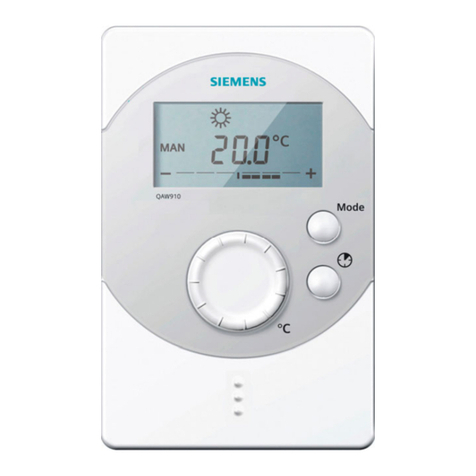
Siemens
Siemens QAW910 Mounting instructions
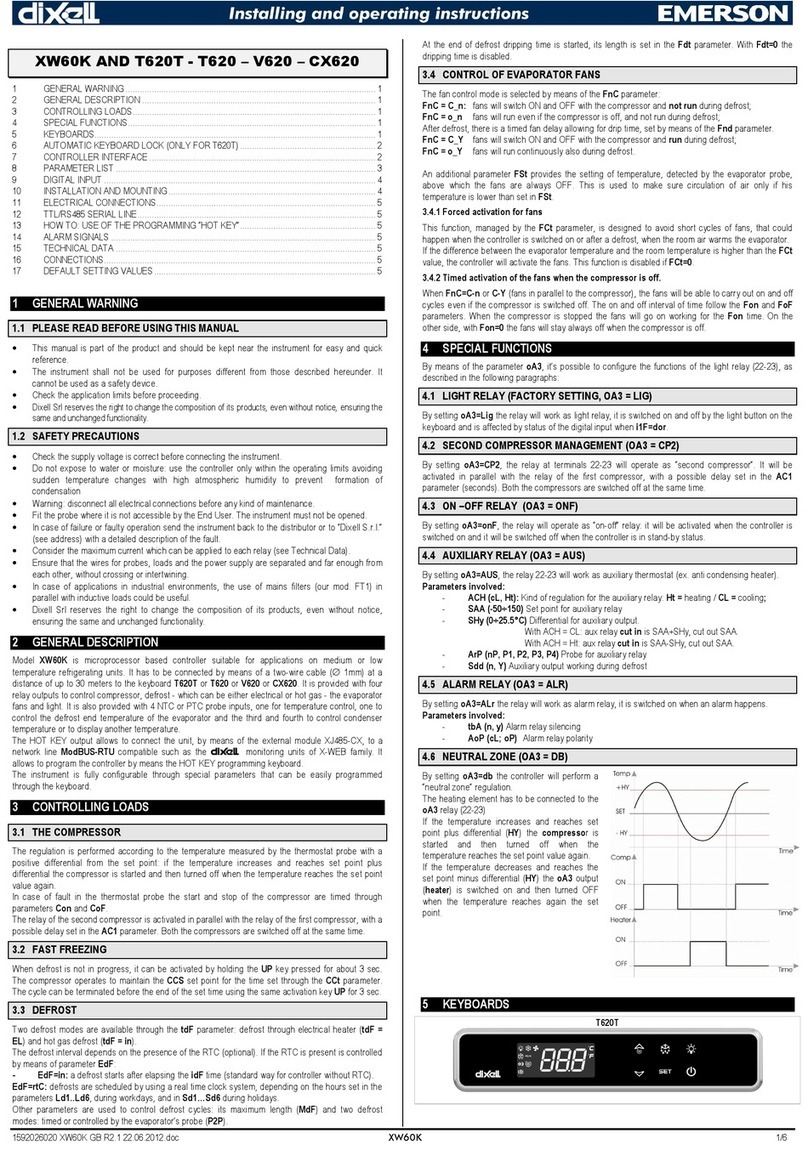
dixell
dixell XW60K Installation and operating instructions

Eurotherm
Eurotherm 2216L Installing and operating instructions
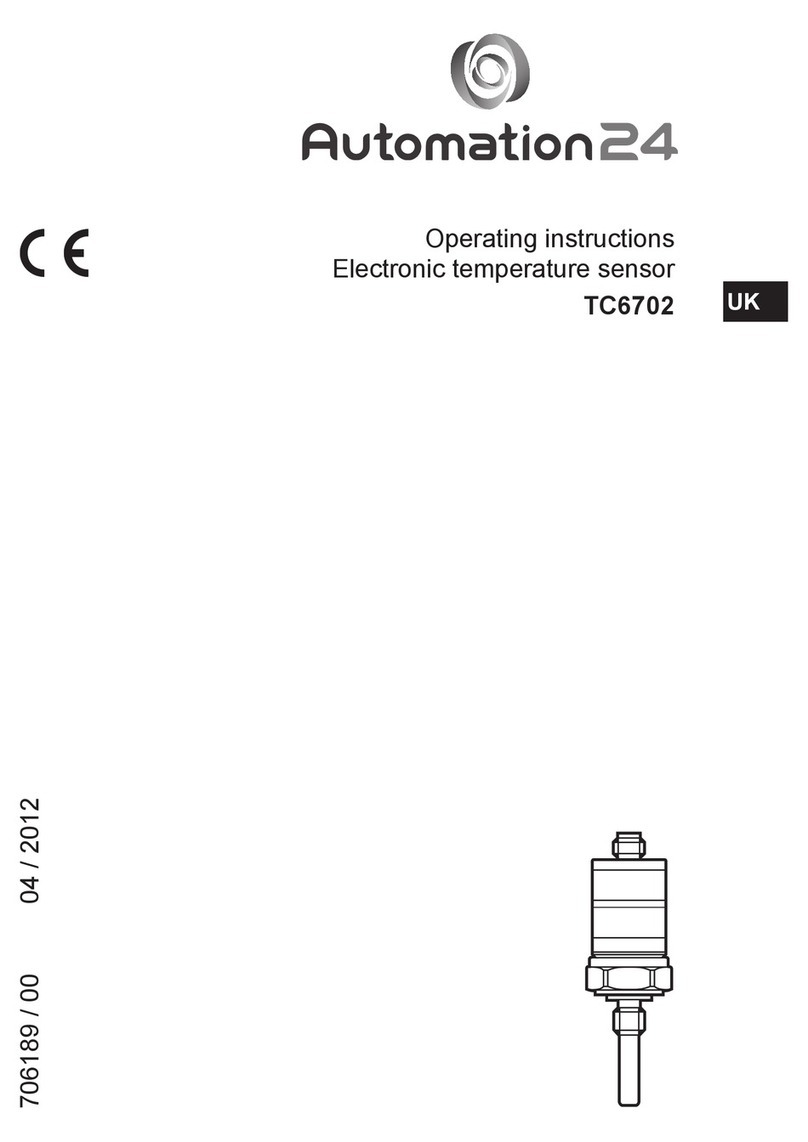
Automarion24
Automarion24 TC6702 operating instructions
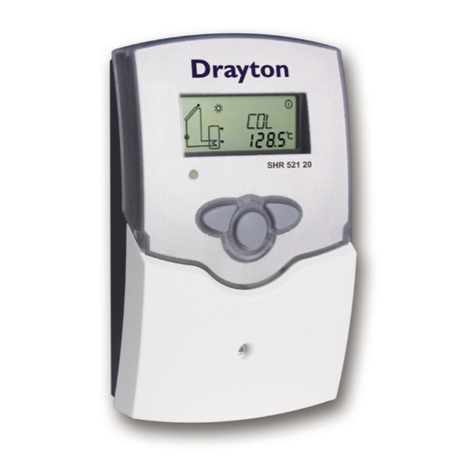
Drayton
Drayton SHR 521 20 Installation & operation manual
Beacon
Beacon TC-W Series Wifi Connection Instructions

